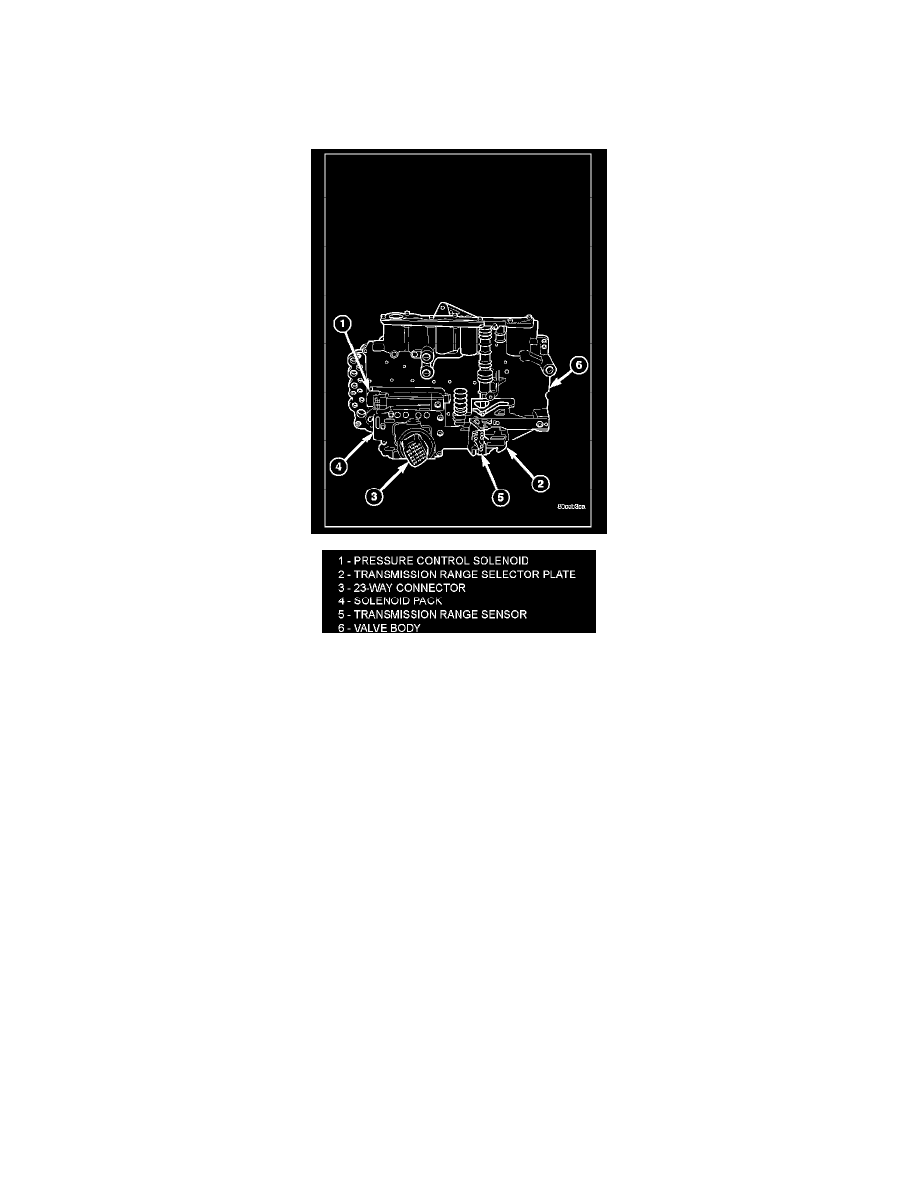Raider V6-3.7L SOHC (2006)

Shift Solenoid: Description and Operation
Automatic Transmission - 545RFE
ASSEMBLY - TRANSMISSION SOLENOID/TRS
DESCRIPTION
The transmission solenoid/TRS assembly is internal to the transmission and mounted on the valve body assembly. The assembly consists of six
solenoids that control hydraulic pressure to the six friction elements (transmission clutches), and the torque converter clutch. The pressure control
solenoid is located on the side of the solenoid/TRS assembly. The solenoid/TRS assembly also contains five pressure switches that feed information to
the TCM.
OPERATION SOLENOIDS
Solenoids are used to control the L/R, 2C, 4C, OD, and UD friction elements. The reverse clutch is controlled by line pressure and the position of the
manual valve in the valve body. All the solenoids are contained within the Solenoid and Pressure Switch Assembly. The solenoid and pressure switch
assembly contains one additional solenoid, Multi-Select (MS), which serves primarily to provide 2nd and 3rd gear limp-in operation. The solenoids
receive electrical power from the Transmission Control Relay through a single wire. The TCM energizes or operates the solenoids individually by
grounding the return wire of the solenoid as necessary. When a solenoid is energized, the solenoid valve shifts, and a fluid passage is opened or closed
(vented or applied), depending on its default operating state. The result is an apply or release of a frictional element. The MS and UD solenoids are
normally applied to allow transmission limp-in in the event of an electrical failure. The continuity of the solenoids and circuits are periodically tested.
Each solenoid is turned on or off depending on its current state. An inductive spike should be detected by the TCM during this test. If no spike is
detected, the circuit is tested again to verify the failure. In addition to the periodic testing, the solenoid circuits are tested if a speed ratio or pressure
switch error occurs.
PRESSURE SWITCHES
The TCM relies on five pressure switches to monitor fluid pressure in the L/R, 2C, 4C, UD, and OD hydraulic circuits. The primary purpose of these
switches is to help the TCM detect when clutch circuit hydraulic failures occur. The switches close at approximately 23 psi and open at approximately
11 psi, and simply indicate whether or not pressure exists. The switches are continuously monitored by the TCM for the correct states (open or closed)
in each gear as shown in the following chart:
